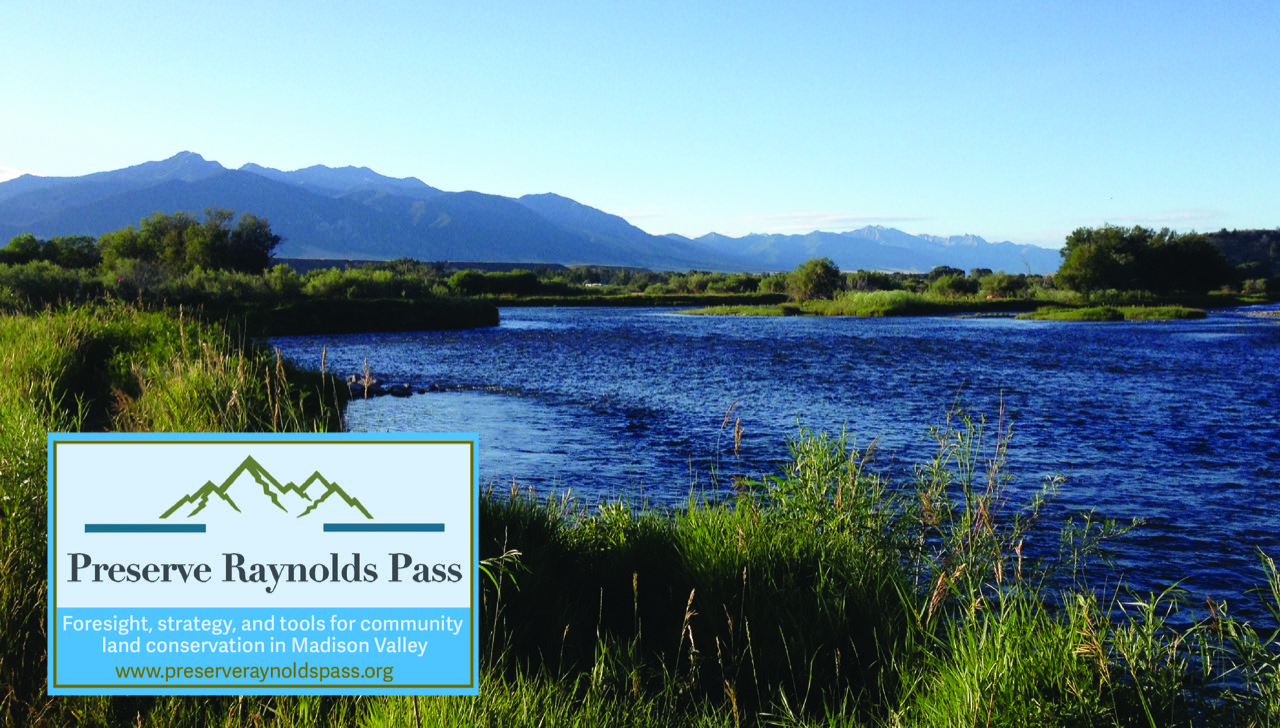Perspective By Randy Carpenter
Park County, Montana is known for its dramatic serene landscapes that stretch north of Yellowstone National Park, bounded by the Gallatin and Absaroka mountains, and stretching into the Shields River Valley, beyond where the Yellowstone River ends its northward course and hangs a hard right bound hundreds of miles downstream toward its confluence with the Missouri.
Though Park County residents last summer went to the polls here and rejected, with 60 percent of the vote, an attempt to negate the county’s growth guidelines, they received a shock this fall upon learning, out of the blue, that a major development is being planned up Suce Creek, a side drainage to Paradise Valley.
Made vivid is the reality that without an implementable strategy, in the form of an enforceable plan to deal with growth issues outside of Livingston, parts of rural Park County could easily come to resemble the patterns of leapfrog sprawl overtaking the Gallatin Valley around Bozeman.
In October 2024, Park County Commissioner Clint Tinsley gave a succinct warning about what the planned development up Suce Creek represents. His public statement, that the extensive resort development planned by Miami-based Flex Capital Group for Suce Creek is just the “tip of the iceberg,” was apt. However, that iceberg has been looming on the horizon for some time, but Park County and many others in our region have done little beyond rearranging the metaphorical deck chairs on the Titanic.
With very little in the way of land use regulations to stop this development, Park County ought to find itself at a serious moment of inflection, and leaders need to act swiftly rather than wait around for the next and next development to arrive. We at Friends of Park County echo the profound concerns of local residents. They fear the potential damage that might come to the ecology, character and infrastructure of the Suce Creek drainage. Click on this link to a video from ERA Real Estate showing the property’s approximate location. And click here to see how local TV covered revelation of the development in October.

This is just the beginning of what outside developers view as the “open country” of Park County, county commission Tinsley said. What he meant is that we are vulnerable to exploitation and it will be all of us who, in some way, pay the costs. Park County already is struggling to maintain its rural road infrastructure and if rural development continues to proliferate its certain that costs for law enforcement, fire protection, emergency medical care and other public services will rise.
In addition to negative impacts to county character, wildlife habitat and agricultural operations found in Suce Creek, the resort would demand millions of gallons of water annually, generate millions of gallons of wastewater and stormwater annually, and create hundreds of thousands of added trips on Suce Creek Road.
The following are our rough estimates of those impacts, and they should serve as a rallying cry for the community to also take the larger threat of growth seriously. This is what happens when a hands-off approach to land use planning is followed, which allows developers to set the terms for what our county will become and not citizens, and it’s up to us to change that.
According to information supplied to the Livingston Enterprise, the proposed development would be a major resort with 100 detached cabins (comparable to Chico Hot Springs, which has 117 rooms), a very large restaurant (7,500 square feet; compare this to Livingston Bar and Grill, which is 2,000 square feet); pools, a spa, and a gym; retail space; an event center; and 400 parking spaces that would take up approximately 120,000 square feet, almost double the size of the Albertson’s supermarket parking lot in Livingston.
The information from the Enterprise is copied below:
- Food & Beverage, 200 Seats — 7,500 square feet
- Pools, Spa, Gym — 4,500 square feet
- Lobby — 3,500 square feet
- Recreational Sales Outlets — 1,500 square feet
- Event Space — 5,000 square feet
- 100 cabins
The impacts on the 90-acre site and the Suce Creek drainage would be immense on things that Park County residents, in different polls and surveys, say matter to the sense of place they love about living here. Some of those things are the pastoral ambiance of the countryside, having local ranches and farms, having healthy wildlife populations, having dependable, sustainable supplies of clean water, having quality hunting, fishing and recreation opportunities, and, of course, not having the county resemble a suburb of Bozeman.
But let’s start with water, since it is lifeblood. Based on numerous government and related sources, we estimate the amount of impervious surfaces created, the water use demanded, the wastewater generated, and the number of vehicle trips stemming from the proposal.
- Impervious surfaces: Impervious surfaces, which include building roofs and paved areas such as parking lots, transform the hydrology of an area. When rain falls and snow melts in an undeveloped area (such as the existing site), most of the precipitation soaks into the ground; when impervious surfaces cover the ground, that water runs across hard surfaces, carrying pollutants like trash, chemicals, and sediment to the nearest stream. The total impervious surfaces of this development would be over 200,000 square feet, which could have devastating impacts on the surface waters of Suce Creek.
- Water use: A resort of this size would use an enormous amount of water. A conservative estimate of the water used by the cabins and the other uses (restaurant, spa, event space) would be over 20,000 gallons daily. Given the uncertainty surrounding other proposed uses on the site (for example, the 5,000 square-foot event center), this number would likely be considerably higher. What would be the impact of drawing this much groundwater from the Suce Creek drainage?
- Wastewater: We estimate that 100 guest cabins, the 7,500 square foot restaurant, the 4,500 square foot spa, the retail site, and the 5,000 square foot event center would generate roughly 20,000 gallons of wastewater daily. While the Montana Department of Environmental Quality will require that the developer build a modern wastewater treatment system, the fact remains that non-municipal systems cannot treat all wastewater effectively – even if it is well-maintained. One only needs to observe the ongoing worries about contamination of the Gallatin River stemming from Big Sky even its with its new multi-million-dollar modern system. Could similar concerns hang over the future of Suce Creek?
- Vehicle traffic: We estimate, conservatively, that the number of vehicle trips up Suce Creek Road and to this resort would exceed 800 per day. These would only be trips attributed to the lodging element of the project (under the assumption that the only trips would be for customers staying at the resort, the event center, the restaurant, the spa, and the retail space, with its customers, employees, and suppliers, would likely generate many more daily trips). That’s tens of thousands of added trips which do not exist now over the course of a year. This also translates to a lot more vehicles merging on to East River Road.
Beyond those concerns that can be tracked with metrics, how might the simple presence of the resort change the feel of the Suce Creek drainage? What kind of disruption will it bring to wildlife moving between the Absarokas and valley? How might one development beget more, not only in Suce Creek but many of the other drainages leading into Paradise Valley? And, at what point do we cross a threshold by which developers looking only to profit off our sense of place, and lax planning, leave that very thing irreversibly transformed.
This was essentially what Commissioner Tinsley was wisely communicating. As a professional planner, I have spent my career studying the catalysts of change that happen when there isn’t a framework in place to deal with growth issues. As we have witnessed in Bozeman, when momentum of growth reaches a certain point it often accelerates in ways planners can’t anticipate. The smartest strategy is to make a plan to confront it instead of being reactionary, which never produces the best outcomes.
Local Livingston resident and writer Scott McMillion said this in a recent interview with Yellowstonian founder Todd Wilkinson after Wilkinson asked him this question, “Do you think Park County, which extends from the Shields Valley to the front doorstep of Yellowstone Park, is ready for what’s coming?”
McMillion pointed to several developments under way in Park County and responded, “I don’t think Park County is in any way ready for the development that’s headed our way. Like I said, the luxury recreation industry has Park County in the crosshairs.”
In the wake of a public outcry over Suce Creek, members of the new incoming county commission have decided to move forward with community meetings early next year to gather citizen input on the actions they should take to finally create some real protections for the water, agricultural lands, and wildlife in Park County.
We believe it’s timely to remind citizens of what the tools are. Here, then, is our list of actions Park County should take in 2025:
- Immediately adopt interim regulations for new resorts and major new commercial developments that would temporarily prohibit them, or at the least, limit their size, identify where they can and can’t be built, and impose conditions to fully mitigate their impacts on water, wildlife, traffic, and neighbors. After due deliberation and necessary research the county commission can adopt a permanent set of zoning regulations. In the absence of county commission action, maybe we need a ballot measure to require large luxury resort developments to be approved by the voters. In Friends of Park County’s scientific poll of voters in 2022, this idea and others related to it had overwhelming, bipartisan, support. Click on video above.
- If the County Commissioners decline to adopt interim regulations, they should start the process of creating a countywide zoning district resort and large commercial development zoning district. This zoning should: a) identify areas where large-scale development is not appropriate; b) include an assessment of the impacts that development can have on water, wildlife, and agriculture; and c) contain enforceable regulations that would limit those impacts where it is allowed.
- Update the outdated subdivision regulations to protect water, wildlife, and ranches from overdevelopment. For many months, we had described how the long-overdue update of Park County’s subdivision controls could protect water, wildlife, farm and ranch lands, and prevent people from building homes and businesses in areas that are likely to burn or flood. Those subdivision controls should also consider the impacts of development on taxpayers who will pay for the maintenance and upgrades of roads and other infrastructure.
- Support the efforts of Park County residents to create their own zoning districts. What it does is allow citizens to protect their own neighborhoods in ways not dissimilar from covenants that residents agree to abide by when they move into a subdivision with regulations governed by their home owners’ association. Montana law allows a clear majority of property owners to form their own zoning district. In fact, five zoning districts have already been created by property owners in Park County. This is called “citizen-initiated zoning.” If you want to know more, click here.
Politicians respond to public pressure and the public has spoken over and over again on what it wants to safeguard in Park County. Please apply pressure respectfully and calmly, but forcefully and frequently. Ask the Park County Commission to steer us clear of the iceberg that is undeniable and not going away.









